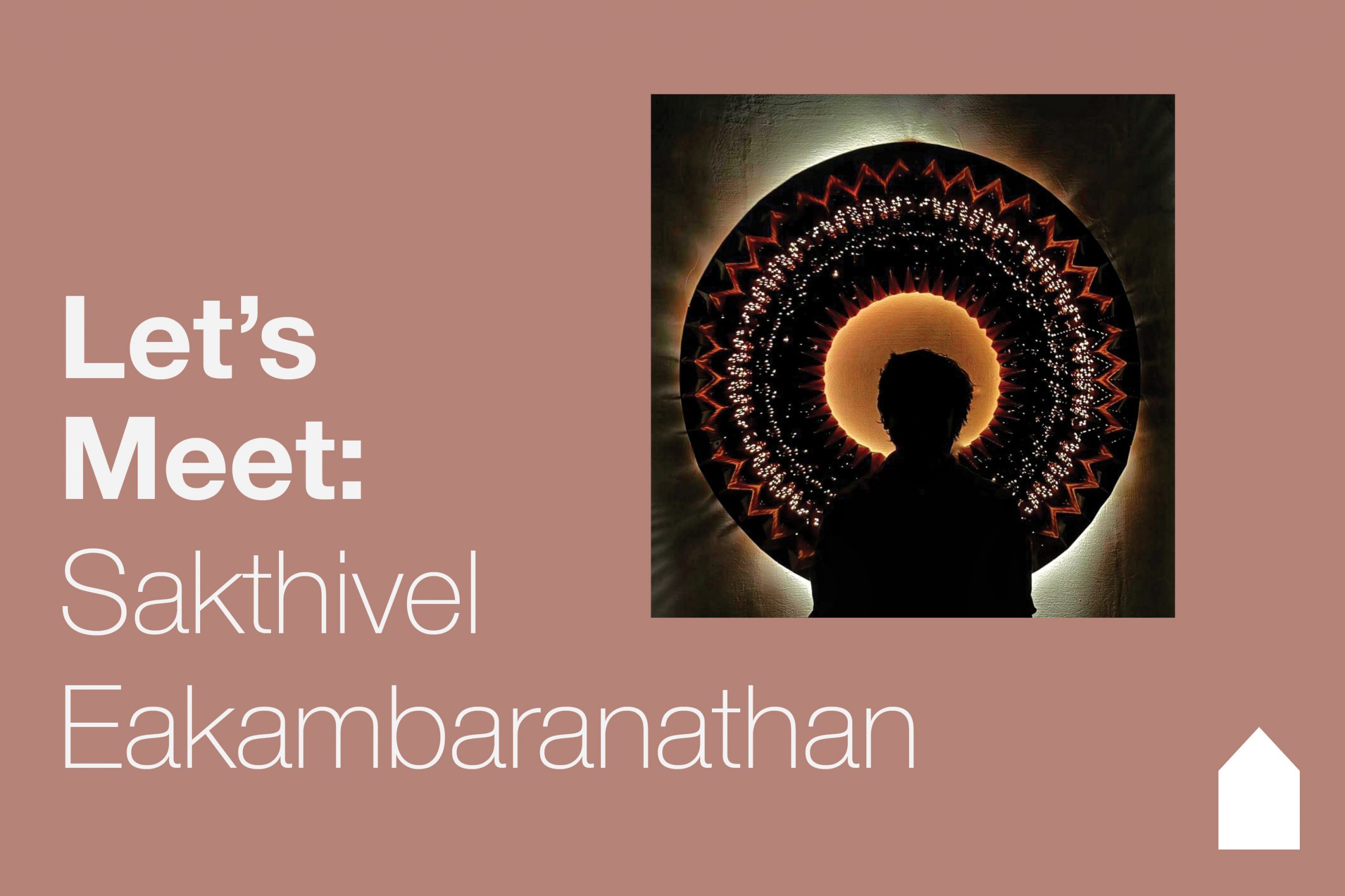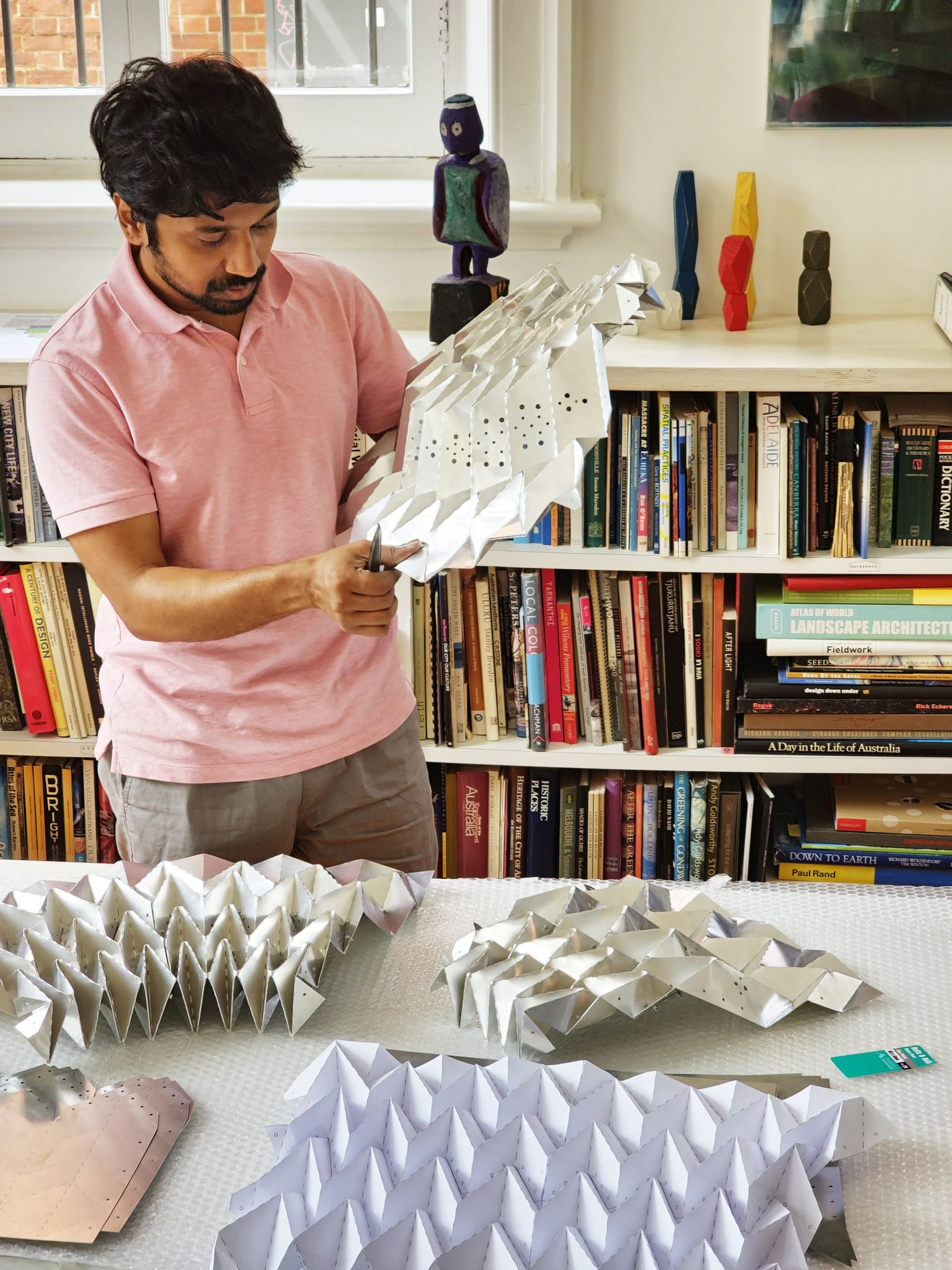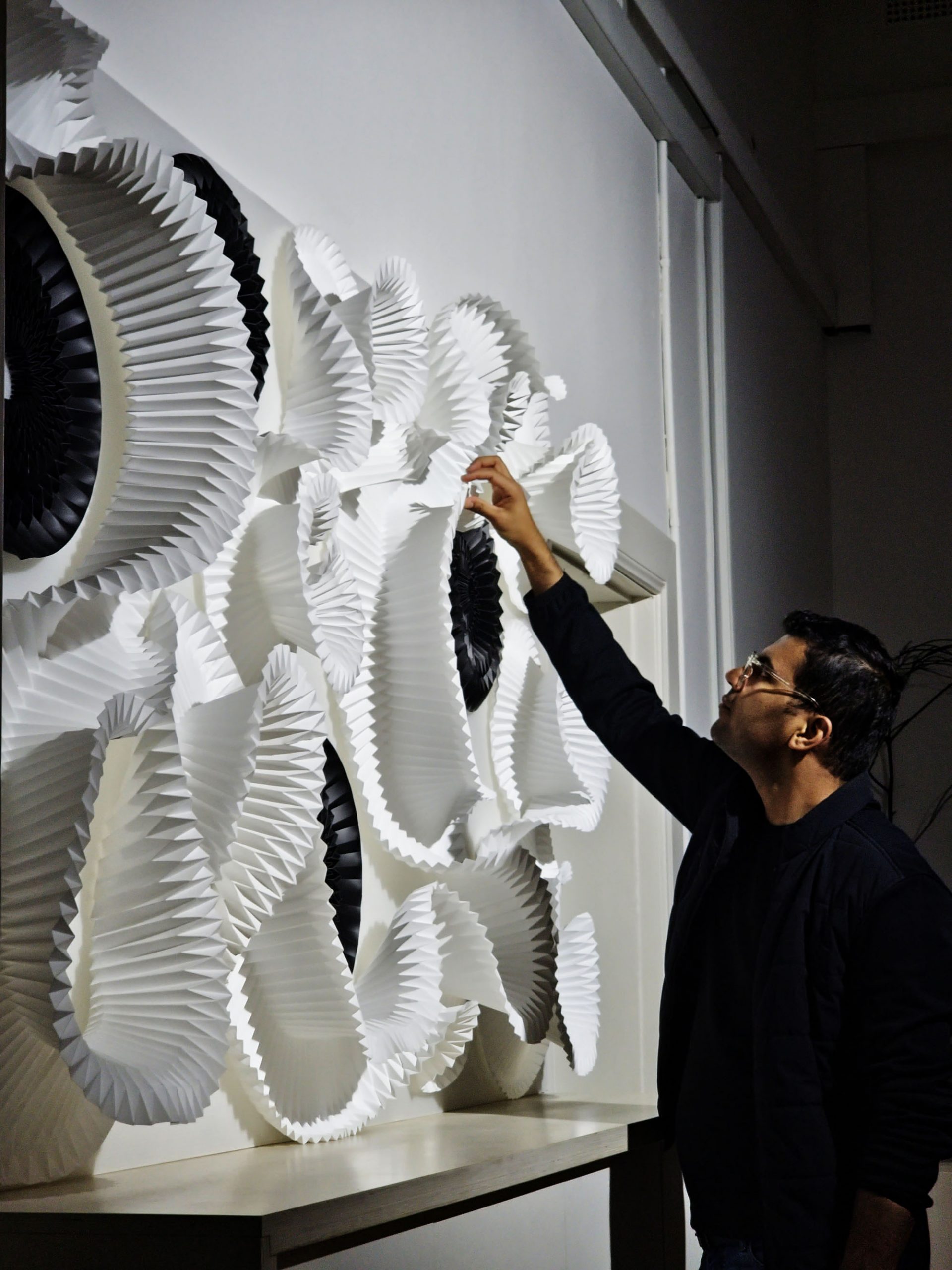
Image: Sakthivel Eakambaranathan, The Orb, 2025, aluminium sheet metal, laser cut and folded, photograph Jackie Gu.
Sakthivel Eakambaranathan is an emerging artist and graduate architect fascinated by the potential of folding metals, where the ephemeral beauty of paper origami meets the enduring strength of industrial materials. He investigates how materials respond to light, movement, and space, crafting installations that evolve with their surroundings. Intrigued by the unexpected ways people interact with his installations, he sees these moments as vital to the life of the work. His practice explores cross-cultural human narratives, while emphasizing the intricate relationship between nature, geometry, and materiality.
How would you describe your practice in 5 words?
Tactile
Folded
Geometric
Hefty
Biomimetic
What does a day in the studio encompass?
A day in my studio is a hands-on, exploratory process surrounded by origami prototypes in various scales and materials. It often begins with hand sketches and 3D modelling to visualize concepts, followed by hours of paper folding to test forms and understand structural possibilities. My workflow also includes material preparation, laser cutting and powder coating. Nearing the end line with the physically demanding task of bending metals to create intricate folds. Alongside the making process, I dedicate time to researching different materials and their potential forms, continually experimenting to push the boundaries of fabrication and design.
What are your key inspirations?
I’m particularly drawn to biomimicry and the way natural patterns, geometries, and processes can inform design and material behaviour. The meditative practice of origami has shaped my spatial understanding, training me to explore structure through folding and repetition, which I now extend into metal, plastic, and other industrial materials. I find inspiration in the stories shared across cultures and how tactile, interactive installations can invite people to connect with each other, with place, and with their own sense of wonder. My practice constantly evolves through material experimentation, interdisciplinary collaboration, and a deep curiosity about how the built and natural worlds intersect.
How has your practice evolved?
My practice has evolved from a foundation in architecture, where early explorations in materials and prototyping sparked a deep interest in designing and fabricating luminaires and furniture. This hands-on curiosity gradually expanded into a passion for creating larger-scale installations, driven by a desire to engage with materials beyond the studio. Each opportunity along the way has helped sharpen my technical skills and encouraged me to explore new creative directions. Most recently, the Illuminate Adelaide Graduate Pathway Program opened up a new dimension, allowing me to experiment with interactivity and audience engagement, which now plays an important role in the way I approach installation work.
What are your creative aspirations for the future?
In the future, I aspire to create public installations that encourage reflection and shared experiences. I’m particularly interested in continuing my material explorations, pushing the boundaries of what is possible with folding techniques applied to robust materials like weathering steel. My ongoing curiosity around how materials behave in light, space, and time continues to shape my creative process. I hope to create something that responds to the environment, invites touch, sparks curiosity, connects people through stories, structure, and the language of materials.


Images: A day in the studio, aluminium sheet metal bending, 2024, photograph by Ram Madhav
Sakthivel Eakambaranathan, Whispering folds, Adelaide Nature Festival, 2024, hand scored and folded in polypropylene, photograph courtesy the artist.
